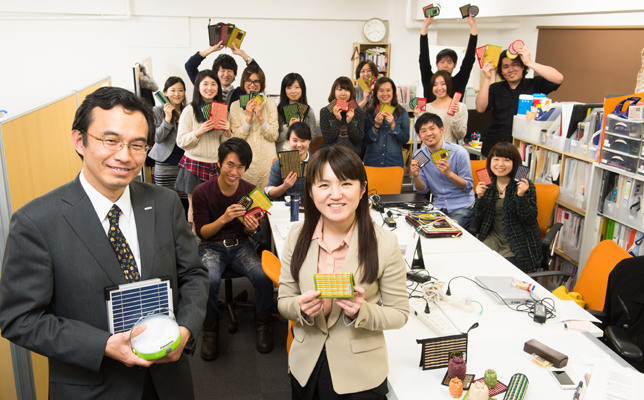2018.01.26Our Partners
Toward an Effective Public-Private Partnerships: UNDP Representative Office in Japan
2014.04.30 Our Partners
The Kamonohashi Project has been working on eradicating child trafficking. Today, solar lanterns are used at their workshops, in economically challenged areas of rural Cambodia. In this interview, one of the non-profit organization's three founders and directors, Sayaka Murata, speaks about how the lanterns are used and how they have helped. (Date of interview: March 17, 2014)
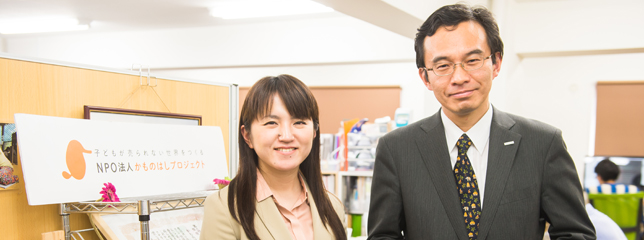
Hoshi: I've been to Cambodia six times, and every time I am astounded by the many changes in urban areas that come with the country's remarkable economic development in recent years.
Murata: Cambodia's economic growth rate has been in the 7% zone for the past several years and national income has increased across the board. Meanwhile, the poorest of the poor cannot escape the cycle of poverty, which has led to increasing economic inequality. What the poor need now is support in improving their lives.
Hoshi: I see. Exactly I also found that there is a great disparity between urban areas like the capital of Phnom Penh and rural regions. It's like two different worlds.
Murata: One of the causes of child trafficking is the poverty that families face, and today victims are shifting from the poor in urban areas to those in rural areas.

Murata: The purpose of our activities is to eradicate child trafficking. There are two aspects of our work in Cambodia: To stop the selling of children, and to stop the buying of children. The former is addressed through the Community Factory project which helps adults earn a stable income and escape poverty, which otherwise would leave them with no choice but sell their children. The latter is achieved by supporting the police in strengthening crackdowns.
The project produces about 20 different products, including business card cases, eco bags, and book covers. The products are sold at four directly operated stores, mainly in Siem Reap, and have been received very well for their superior quality. The products are also available online (on Japanese webpage).

A business card case produced at the workshops
Hoshi: I have my rush-grass-made business card case. It's my favorite [laughing].
Murata: Thank you so much. I'm glad you like it.
Hoshi: In the recent donation, I also visited the second workshop, a satellite factory, and got the impression that you are steadily expanding your activities. How many women are working with you today?
Murata: Overall, we have about 130 women working with us. Their ages range from the late teens to mid-forties. The women work from Monday through Saturday from 7 a.m. to 5 p.m., with a two-hour lunch break. In Cambodia, it is the tradition to plant and harvest rice with the entire family so during these seasons, we allow the women to take days off as needed, and we try to keep things flexible by adapting to the rhythms of village life.
Hoshi: It's very important to respect their life styles and tradition. What kind of process do the women go through to start working at your workshops?
Murata: First, we talk with the chiefs and leaders of local communes, the Japanese equivalent of municipalities, and ask them to create a list of poor families in the area. Next, we hold an orientation at the commune offices to find out who is interested. This is then followed by individual home-visits where we look at the family composition, livestock, household possessions, materials used to build the home, and the area of their land to make general assessments and determine priority of acceptance.
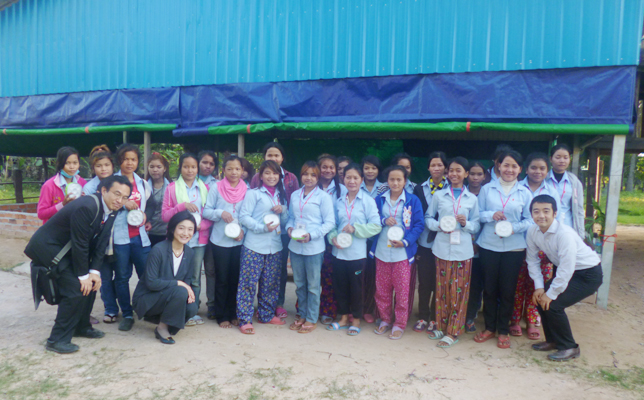
Group shot taken with the employees of the second workshop's satellite factory in Dec. 2013.
Hoshi: Please tell us again how the solar lanterns are used in your workshops.
Murata: The workshops do not have electricity so the solar lanterns are a great help. We use them when the workshops need more light during rainy weather or in the early evening.
The products we make require intricate handwork and the lanterns help make this work easier and maintain product quality. They also help relieve eyestrain of workers.
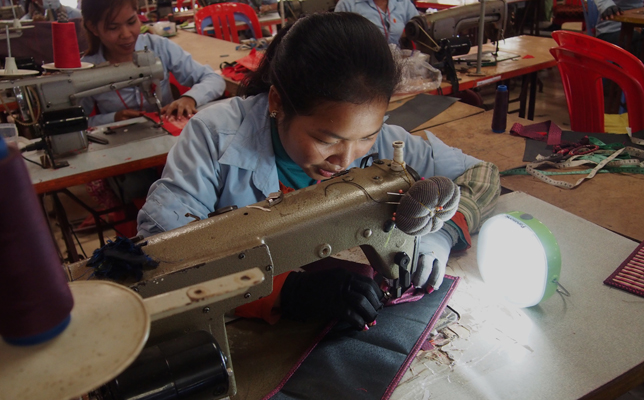
A solar lantern provides light for a woman working with her sewing machine.

Solar lanterns are also helpful when sorting (left) and cutting (right) rush grass.
Hoshi: It is nice to know such positive feedback. I also noticed that the lanterns play a special role in the lunch-time literacy classes. I was impressed when I saw that the class was attended by most of the women and how lively it was.
Murata: Teachers from a nearby elementary school come to teach the classes, and we lend out the solar lanterns as an incentive to those women who have a good attendance record. They can then use the lanterns when studying at home.
Hoshi: How do they like the latest solar lanterns that were donated before?
Murata: They are compact and easy to carry and we've received a lot of positive feedback from the local people raving about their cute design.
Hoshi: I'm glad to hear that. Design-wise, we applied many new ideas since the previous model. For example, the handle design makes the lantern easier to hang. Going forward, we will continue to make improvements to meet various needs.
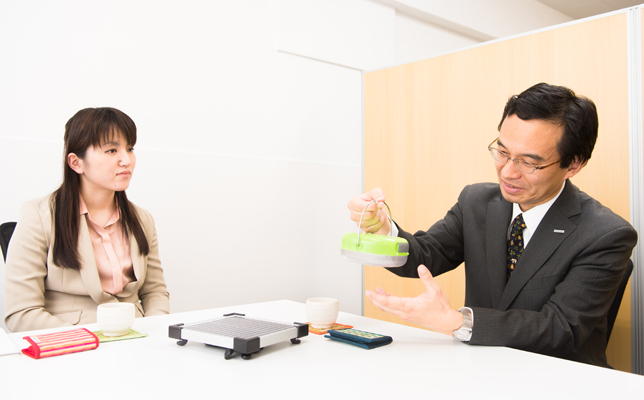
Hoshi: It is truly amazing that you've created employment for 130 people in the community.
Murata: Thank you for encouraging us. In fact, job is scarce for Cambodian women. In some cases, the father goes away to work as a migrant worker and does not come back or dies of illness. Children without parents or those from single-mother households are most vulnerable to child trafficking. That is why for rural people, having a safe place of work that provides enough income to lead a stable life is so critical; because that is what keeps their families together.
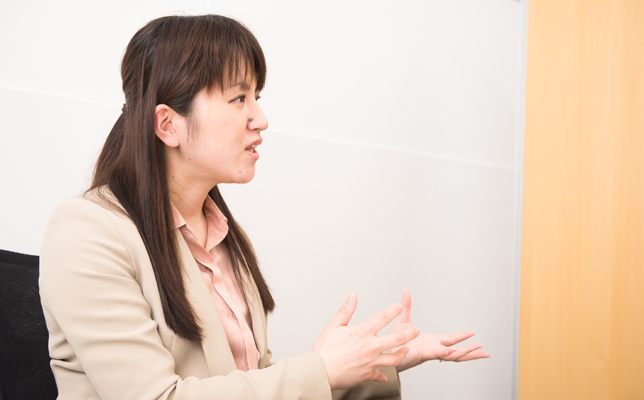
Hoshi: I see. Job creation is a fundamental answer to eliminating poverty and the way you approach the poor is simply remarkable.
Last of all, do you have any requests regarding the use of solar lanterns in rural areas?
Murata: One of our ideas is that the lanterns could help make things safer for women going outside at night for the toilet or walking on dark streets to and from school. Women have been attacked in such situations and it is a serious concern for local women. Additionally, village chiefs and police that provide cooperation in community factory operations sometimes ask to borrow the solar lanterns, so it would be nice if we could lend them out to people like these who work for the benefit of the villages.
Hoshi: Yes, indeed. Through light, we can build ties with important stakeholders of the community. I hope you will continue responding to local needs as necessary, and I hope that we can continue working with the Kamonohashi Project in solving social challenges by each doing what we do best.
